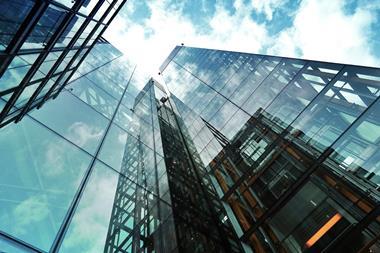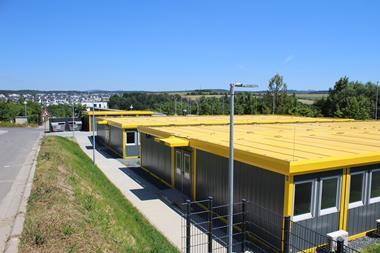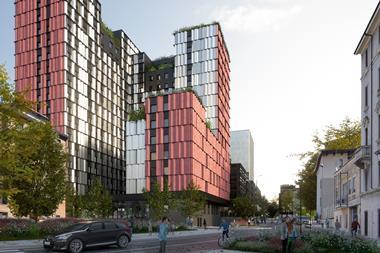Richard Palmer explains why real estate and infrastructure sectors must collaborate

Real estate specialists need no reminding after COP26 that buildings account for 37% of global greenhouse gas emissions. But it’s a sobering fact that the urban built environment, including infrastructure, more than doubles this figure to 75%.
At the same time, cities represent 80% of our global GDP, with more than half the world’s population living in them – the latter proportion is expected to grow to 70% by 2050.
While US President Joe Biden used COP26 to unveil a 90-country plan to limit global methane emissions by 30% by the end of the decade, commitments by the real estate and infrastructure worlds were conspicuous by their absence.
There is very little collaboration between the worlds of real estate and infrastructure when it comes to efforts to reduce global greenhouse gas emissions – which is an astonishing situation when you consider how much the two worlds overlap.
It is equally surprising when you consider the benefits the world could derive from infrastructure and real estate collaborating more closely on issues such as energy use, transport planning, investment strategy and contracts.
With the World Green Building Council, Dar Group, comprising member firms including green engineering consultancy Integral, architects Perkins & Will, project managers Currie & Brown and multi-disciplinary engineering group TY Lin, have tackled the yawning gap between the two worlds.
Our new report, Beyond Buildings – why an integrated approach to buildings and infrastructure is essential for climate action and sustainable development, offers practical ways for the whole built environment to more effectively tackle climate change.
There is a massive conundrum at the heart of this debate. We cannot just stand still, because the developing world in particular needs to accommodate its booming populations and ensure they live in the conditions enjoyed by the rest of the world.
In Africa, where the population is projected to increase by 42% by 2030 compared to 2015, the demand for new buildings will increase considerably. And according to the Global Infrastructure Basel Foundation, 75% of the infrastructure needed by 2050 is still to be built.
Oxford Economics and The Global Infrastructure Hub say that globally, the need for infrastructure investment is forecast to reach $94trn (€81.4trn) by 2040, and a further $3.5trn will be required to meet United Nations Sustainable Development Goals for electricity and water.
So, given we are building infrastructure and real estate assets now which will have an impact over the next five, 10, 50 and 100 years, what can be done now? First, the whole infrastructure and built-environment worlds need to move from net zero as a mark of leadership to accepting the universality of this mission. It must be the rule, not the exception.
Next, the infrastructure world in particular needs to export its expertise in Europe, North America and Australasia into developing markets, enhancing the undoubted skills there with a new collaboration aimed at promoting net zero. We also need global governance protocols on sustainability, reaching into public procurement and decisions made by the world’s biggest investors.
Real estate developers and investors and infrastructure promoters and operators also have to take responsibility for themselves. Buildings cannot decarbonise without changing their energy supply, and developments surrounded by new infrastructure do not need to both rely on concrete.
By teaming up to improve their energy arrangements and procurement of materials, developers and infrastructure promoters can have a major influence on the supply chain and use this influence to persuade those suppliers to aim for net zero as well.
There also needs to be closer collaboration between development planners and transport planners, so that they are in alignment with Paris Agreement principles.
And there needs to be a consultative process between COP 26 in Glasgow and next year’s COP 27 in Sharm El Sheikh City in Egypt to create a common language for the infrastructure and buildings world to become more closely connected.
My message to developers? Look at the intersection between design, energy and operations: examine closely how you buy your power and also plan for a steep fall in car use. Most electric charging points will be in buildings – what are you doing about that?
My message to infrastructure investors and planners? For new roads and airports, the principles of not using fossil fuels, reducing embodied emissions and making acceptable offsets must be made with a high level of consistency – so a net-zero bridge is as possible in Brazil as in Germany.
There are material linkages everywhere between buildings and infrastructure, but the two worlds are now taking different paths to net zero. They will get there much quicker by working together.
















